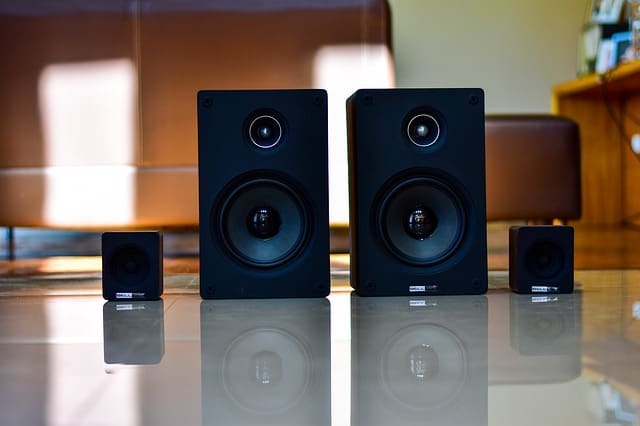It’s always an exciting moment when you get a new set of headphones or surround speakers for the entertainment room. You can’t wait to set them up and experience a new level of clarity and audio quality. Music will come alive, and movies will have a whole new layer of immersion. You may have even researched exactly where to put your new speakers to get the best sound possible.
According to Shaun O’Brien of Selby, a major speaker retailer in Australia, “What most people don’t realize is that speakers and headphones are not actually at their full potential when they come out of the box. Just like a pair of new shoes, speakers have a break-in period. Components within the speaker will shift as it settles in and gets some use, which can alter the audio quality.” If you are a true audio fanatic, you should burn-in your speakers so you can hear what they are truly meant to sound like.
Wait, speakers can be broken in?

Understanding why your speakers should be broken in means understanding how a speaker works at the base level. Three main components make up a speaker: the cabinet, the crossover, and the driver. The cabinet simply refers to the outer shell of the speaker that holds everything together and looks nice. The crossover device takes in the audio signal and divides it between the drivers based on frequency. The drivers receive their electrical audio signals and convert them to kinetic energy signals as vibrations that we can hear. Most hi-fi speakers have at least three drivers: high frequencies (tweeter), mid-range, and bass frequencies (woofer).
Drivers are composed of a frame connected to the diaphragm, or cone, via small connection points made of a flexible material that re-centers the cone within the frame. This flexible material loosens when you use your speakers, allowing the drivers to move freely. This loosening of the speakers is the burn-in process.
Won’t the speakers loosen up when I start using them?
Yes, by simply using your speakers, the drivers will loosen.
However, it could take at least 30 hours for this process to start, and your speakers will continue to change during the first 100 hours of listening. Doing a burn-in can speed up this process, and if done correctly, can help loosen up all the flexible parts of the speaker more effectively than standard listening.
Okay, so how do I start?
There are many different techniques used for burning in speakers. The most basic method is to just start playing music for hours on end. The general recommended time is 40 hours of continuous playback, and of course, you should use a separate room to do this so that you can focus on other things in the meantime.
You want to play the music at a moderate volume level to ensure the driver produces ample vibration but not full volume, or you risk damaging the drivers. If you can’t do 40 continuous hours, try sessions of at least 4-5 hours at a time.
If you choose this method, don’t just pick a random playlist or loop the same song. Instead, opt for a playlist specifically crafted for burning in speakers. Many audio engineers and tech companies create burn-in playlists designed to include a wide range of frequencies that exercise the speaker’s dynamics. This helps to ensure that all drivers are getting broken in equally.
The alternative method is playing a specific speaker burn-in track. Rather than music, these downloadable audio tracks play various noises and specific frequencies to break in the speaker. Some audio lovers may argue that this is the most effective way to burn-in your speakers, but it can be less tolerable than music.
The process for headphones is the same — just leave them on and make sure they are plugged in! Once your speakers are burned-in, you can enjoy them as they are meant to be heard, and if you care about proper speaker placement, reassess their positioning once they are burned in. You might notice that they sound slightly different from when they came out of the box.
Featured Image by fernando zhiminaicela from Pixabay




